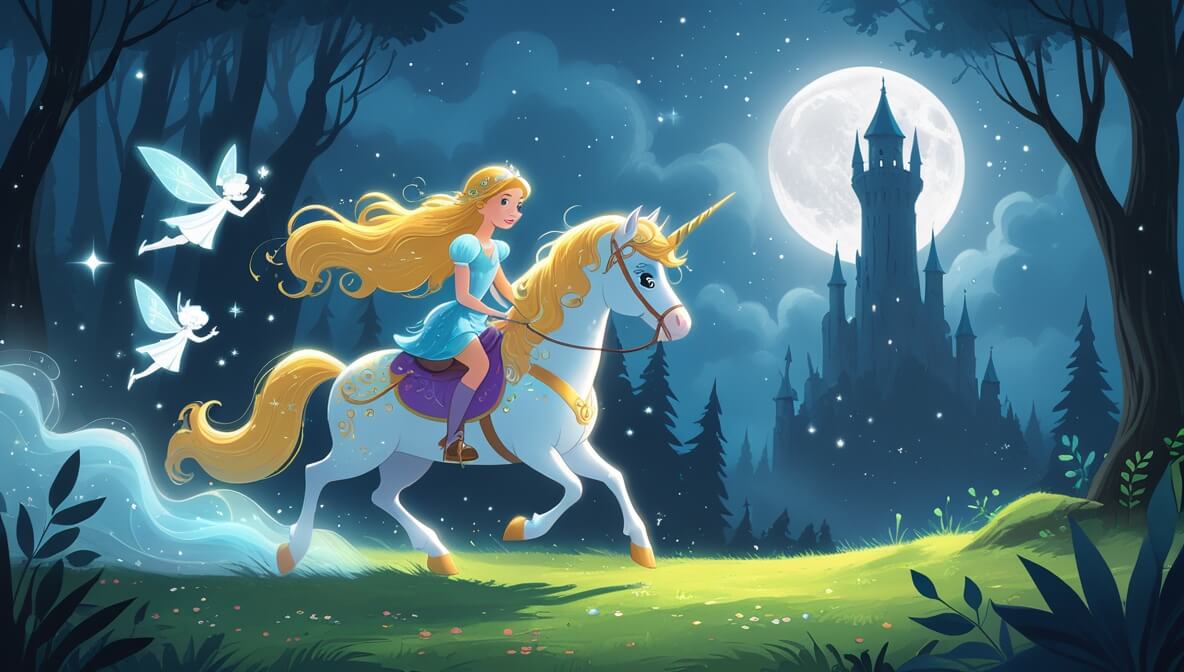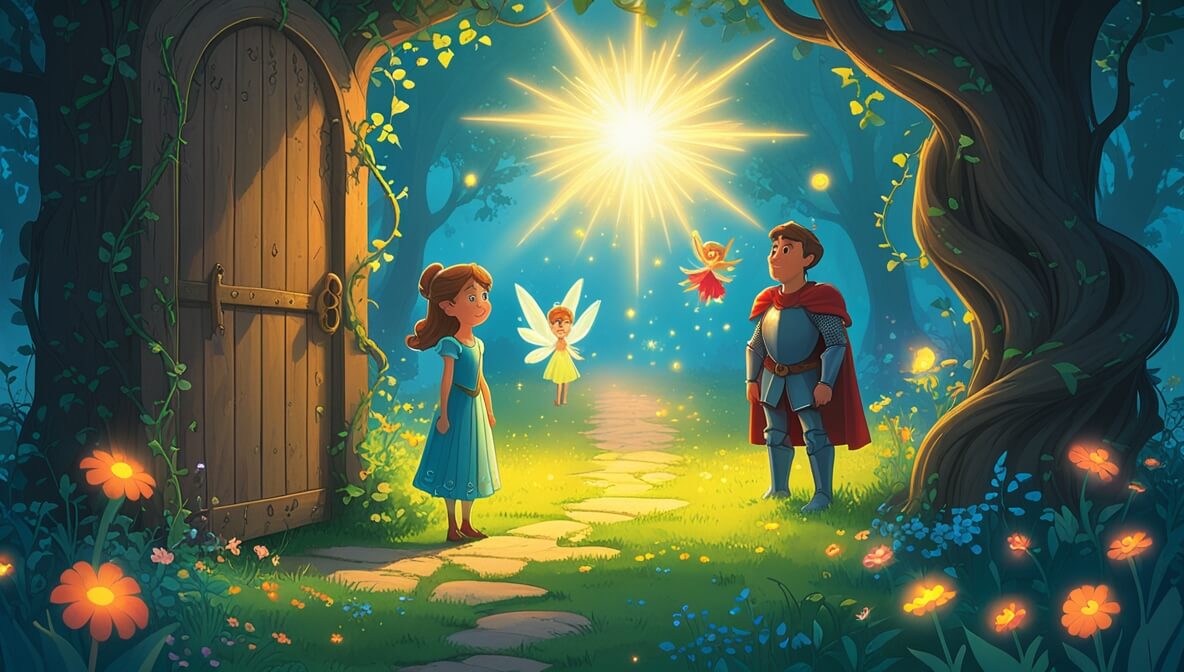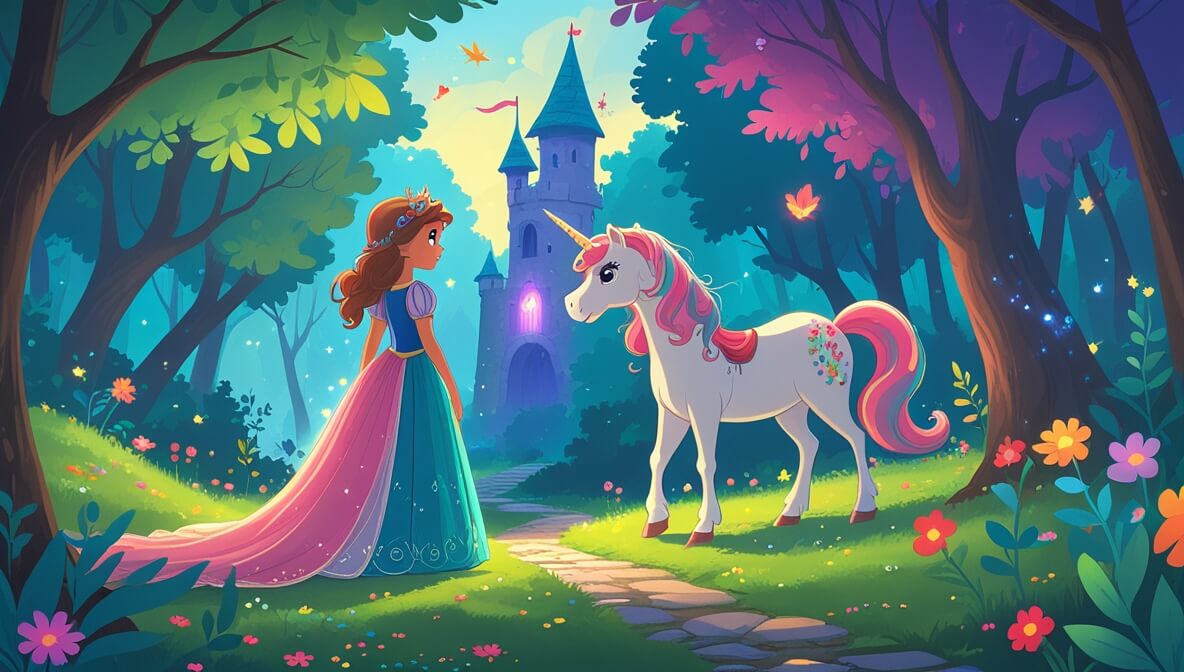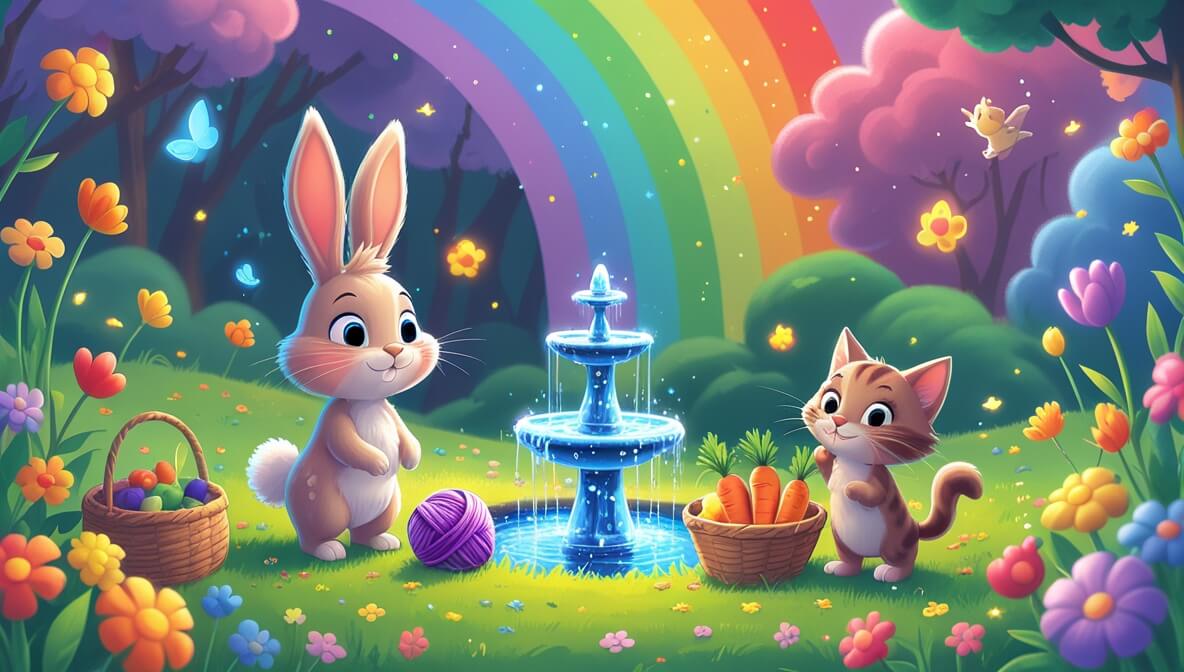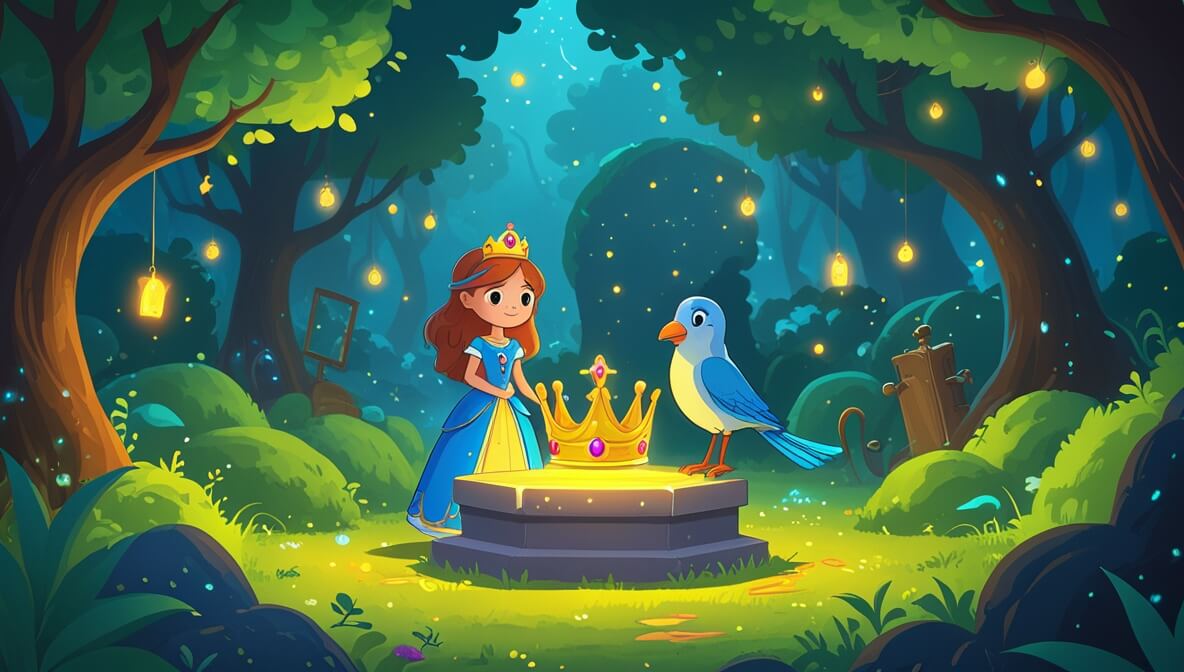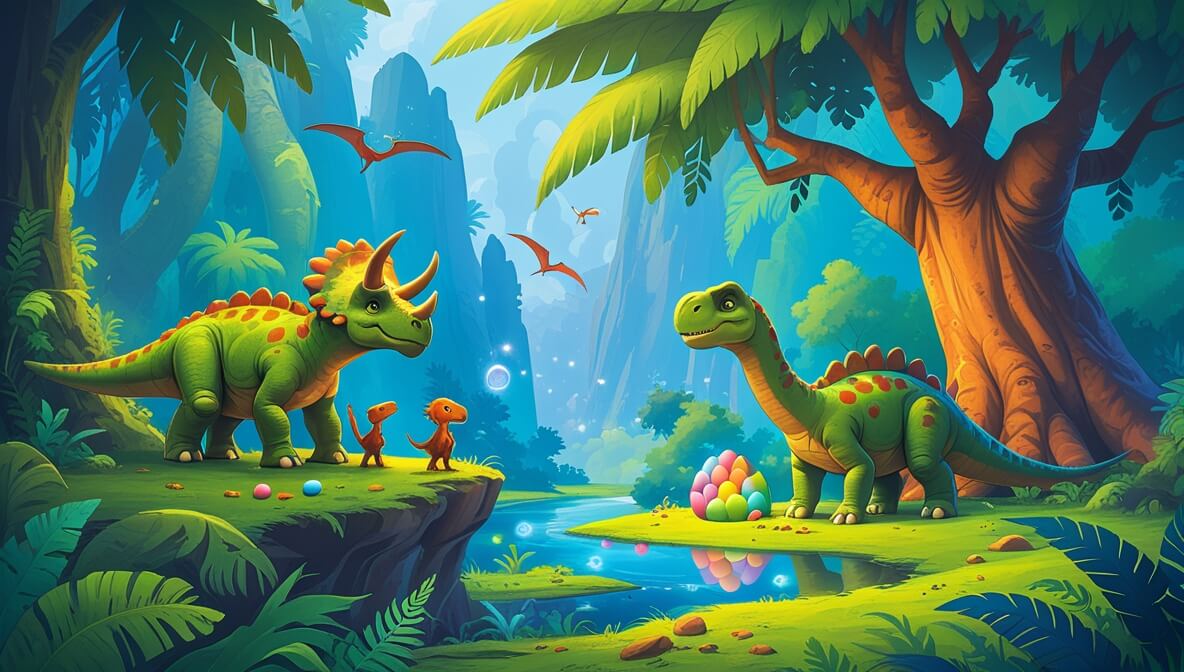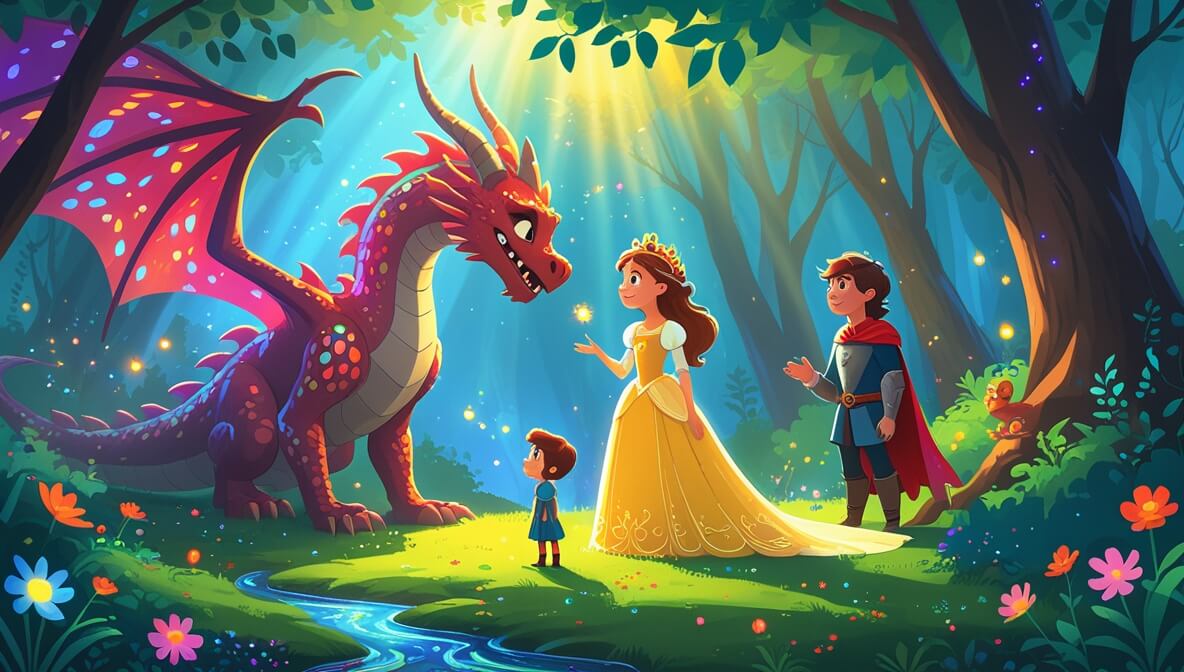In a magical kingdom where dreams come true, Princess Nola embarks on a quest to save her parents from a mysterious enchantment. Alongside her loyal unicorn, she discovers the true meaning of bravery and love.
Age Recommendation
3 – 12 years
Characters
Characters:
- Princess Nola (a kind and courageous princess)
- Glint (Nola’s loyal unicorn with a sparkling horn)
- King Orin (Nola’s wise and gentle father)
- Queen Mira (Nola’s loving and graceful mother)
- Wisp (a mischievous but helpful fairy)
- Umbra (a mysterious sorceress with hidden motives)
Story
Once upon a time, in the heart of the Enchanted Forest, stood the grand kingdom of Eldoria. Princess Nola loved to wander its lush gardens with her unicorn, Glint. One day, a thick fog enveloped the kingdom, and her parents, King Orin and Queen Mira, fell into a deep, magical sleep. Nola, determined to break the spell, set off on an adventure.
The Quest Begins
Princess Nola rode Glint through the misty woods, her heart pounding with determination. Along the way, she met a playful fairy named Wisp. “I know where you can find the spellbreaker,” Wisp whispered. “It’s hidden in the Cave of Echoes.” With a new friend by her side, Nola and Glint galloped towards the mysterious cave.
The Cave of Echoes
The cave was dark, and eerie sounds bounced off the walls. “Stay close,” Nola whispered, as Glint’s horn lit the way. Deep inside, they found a shimmering pool. “Look into the water,” Wisp urged. As Nola gazed, she saw a vision of the sorceress Umbra weaving the spell over her parents.
Facing the Sorceress
Nola, Glint, and Wisp ventured further into the forest to find Umbra’s tower. As they approached, a shadowy figure emerged. “Why do you seek me?” Umbra asked, her voice a soft whisper. “I must save my parents,” Nola replied bravely. Umbra, intrigued by Nola’s courage, agreed to lift the spell if Nola completed a task.
The Task
“Retrieve the moonflower from the mountain’s peak,” Umbra instructed. Nola nodded, mounting Glint once more. The journey to the peak was steep and treacherous, but Nola’s determination never faltered. As the moon rose, the mountain was bathed in silver light, revealing the rare moonflower.
The Power of Love
Nola carefully plucked the flower and returned to Umbra’s tower. “Here is the moonflower,” she declared. Umbra smiled, her heart touched by Nola’s love for her family. With a wave of her hand, the enchantment over King Orin and Queen Mira was lifted.
Reunited, the royal family returned to Eldoria, where the kingdom celebrated Princess Nola’s bravery and love. From that day on, the kingdom knew that true magic lies in the power of love and courage.
The end.
Moral of the Story
The story teaches that true courage comes from the heart, and the power of love can overcome any obstacle. Bravery isn’t the absence of fear, but the will to face it for those we care about.
Questions to Think About
- Why do you think Princess Nola was able to succeed in her quest?
- How did Glint and Wisp help Nola on her journey?
- What would you have done if you were in Nola’s place?
- Why do you think Umbra decided to help Nola in the end?
- What is the most important lesson you learned from this story?
Do You Know
- Unicorns are often seen as symbols of purity and grace, believed to bring magic and wonder to those who encounter them.
- Moonflowers are real plants that bloom at night, symbolizing mystery and magic.
Word Explorer
- Enchanted: Something that is magical or filled with wonder.
- Spellbreaker: A special item or action that can undo a spell.
- Determination: A strong feeling of wanting to succeed or achieve something.
Emotions in the Story
- Bravery: Felt by Nola as she ventured into the unknown to save her parents.
- Curiosity: When Wisp guided Nola to the Cave of Echoes and she wanted to learn more.
- Love: Nola’s motivation to complete the quest and break the spell over her parents.
Color Your Scene
Imagine the moment when Princess Nola stands at the mountain’s peak, the moonflower glowing under the moonlight. Picture the silver light reflecting off the snow, and the vibrant colors of the flower against the dark sky. Draw this magical scene using bright silvers, blues, and purples to capture the enchantment.
Parents’ Corner
This story is a wonderful opportunity to talk with your child about:
Bravery: Discuss how Nola’s courage came from her love for her family, and how they can find courage in their own hearts.
Perseverance: Talk about how Nola didn’t give up, even when the journey was tough, and encourage your child to keep trying in difficult situations.
Empathy: Explore how understanding others, like Nola’s interaction with Umbra, can lead to kindness and friendship.
Family bonds: Emphasize the importance of love and support within a family, and how these bonds can inspire personal growth and bravery.

